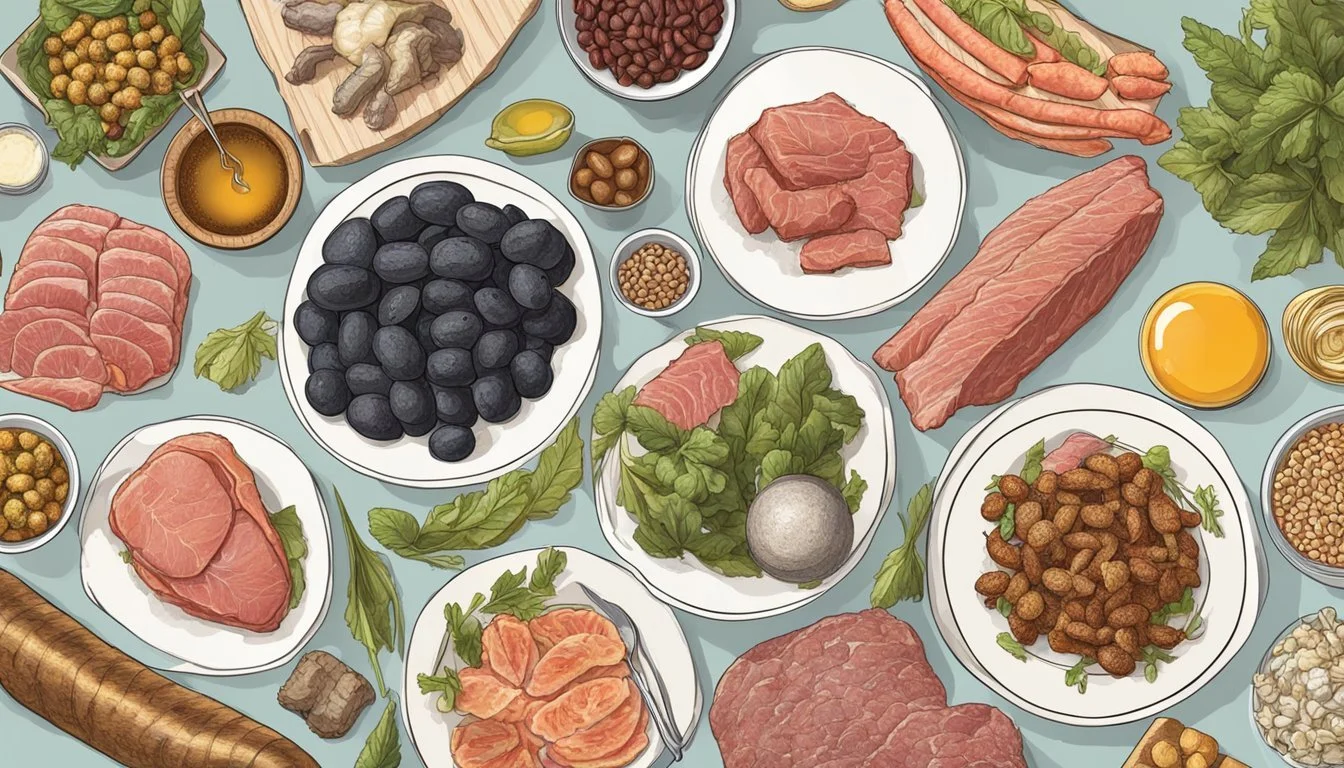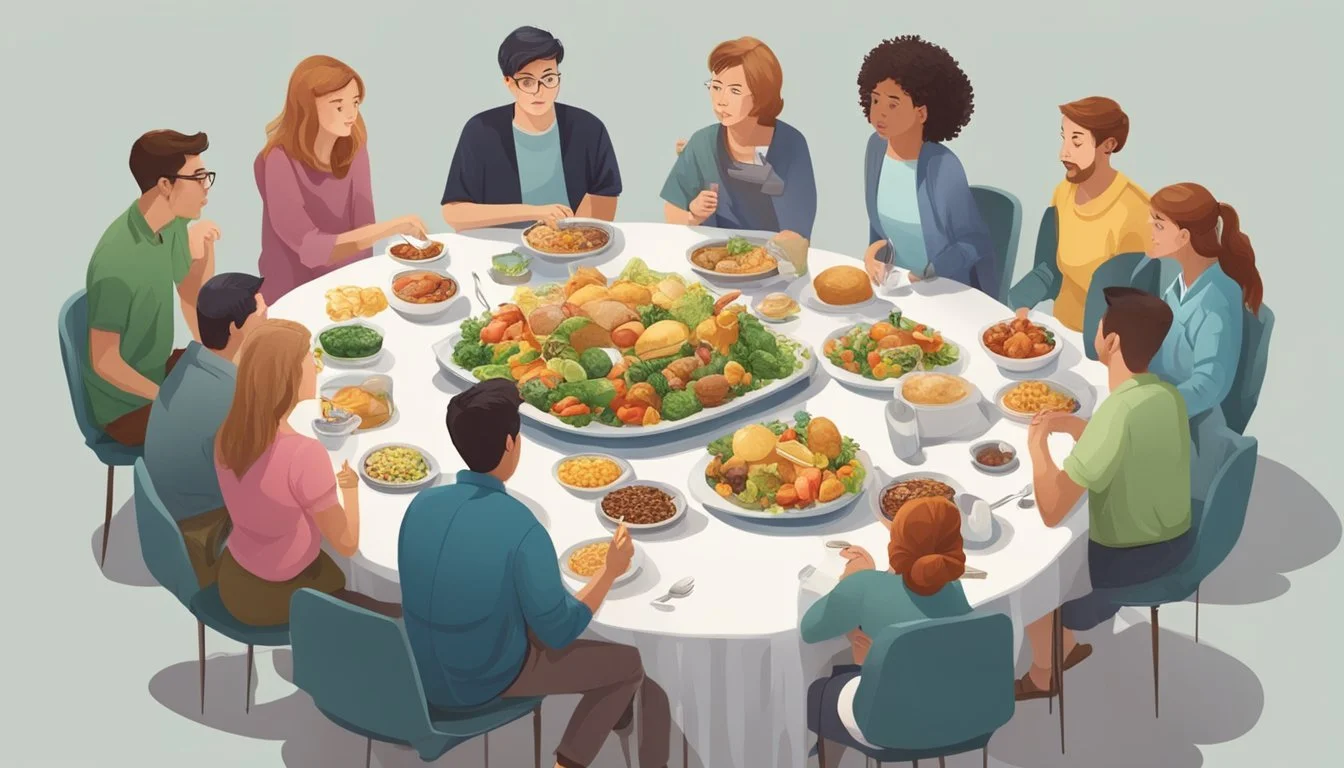10 Bizarre Diets You Won't Believe Exist
Astonishing Eating Trends
Diet trends come and go, but some are so outlandish they leave us scratching our heads. The quest for the perfect body or the quickest weight loss solution has led to the creation of some truly bizarre diets.
What drives people to try such unusual and sometimes dangerous methods of dieting? This article explores 10 of the most bizarre diets that have ever existed, shedding light on the lengths to which individuals will go in their pursuit of health and fitness.
1) The Air Diet
The Air Diet, also known as "Breatharianism," claims that individuals can live without consuming food. Proponents argue that human bodies can sustain themselves on air and sunlight alone.
Originating in France, this diet suggests participants eat only broth-based soups or water-infused foods, and occasionally pretend to eat solid food. Despite these practices, the diet insists that people forgo real, substantial food entirely.
This diet can pose severe health risks, including malnutrition, organ failure, and even death. Medical professionals warn against such extreme eating regimens. Critics highlight the lack of scientific evidence supporting the claims made by advocates of the Air Diet.
Individuals who follow this diet may prioritize spirituality over physical nourishment, often believing that their bodies can be sustained by pranic energy or life force. Public awareness campaigns emphasize that no credible studies confirm these beliefs, urging caution and skepticism.
Overall, the Air Diet remains a highly controversial and dangerous practice, highly criticized by the medical community. People are encouraged to seek balanced, nutritious meals for their overall well-being.
2) The Cotton Ball Diet
The Cotton Ball Diet is an extreme and controversial dieting method. It reportedly began in the modeling industry.
Participants consume cotton balls dipped in liquids such as juice or soup. The belief is that these cotton balls create a feeling of fullness without adding calories.
Medical professionals have labeled the diet as dangerous. The cotton balls may contain harmful chemicals if they are not made from 100% cotton. Additionally, consuming these balls can cause digestive blockages and other severe health issues.
This diet is often criticized for promoting unhealthy eating behaviors. It poses significant risks and offers no nutritional benefits.
3) The Tapeworm Diet
The Tapeworm Diet originated in the Victorian era and quickly gained notoriety for its extreme nature. The diet involved ingesting tapeworm cysts, often in the form of pills, which would then hatch in the intestine.
Advocates claimed that tapeworms absorbed a significant portion of the consumed calories, leading to effortless weight loss. Despite such claims, the method was fraught with serious health risks and complications.
Common side effects included nausea, diarrhea, and chronic abdominal pain. In severe cases, if the tapeworm larvae migrated to other parts of the body, such as the spine or brain, they could cause seizures or even nerve pain.
There were skepticism and debate surrounding the authenticity of tapeworm clinics and the testimonies supporting them. Famous figures rumored to have followed this diet, such as Maria Callas, added to its allure, though such accounts often lack verification.
The diet ultimately posed a severe threat to health, overshadowing its weight loss promises. Today, the Tapeworm Diet is largely considered dangerous and is not recommended by medical professionals.
4) The Sleeping Beauty Diet
The Sleeping Beauty Diet hinges on the principle that one cannot eat while asleep. This diet involves using sedatives to sleep for extended periods, theoretically reducing calorie intake.
Elvis Presley popularized this diet, which he referred to as the "Sleeping Beauty" approach. He believed extensive sleep could aid in weight loss by eliminating opportunities to eat.
This diet is considered highly dangerous due to the risks associated with prolonged sedation. Health professionals warn against it, as it can lead to dependency on sleeping pills and severe health issues. It is not a sustainable or safe method for weight management.
5) The Baby Food Diet
The Baby Food Diet involves consuming jars of baby food as a replacement for regular meals. This diet has been popularized by some celebrities and fitness trainers.
Participants typically eat multiple jars of baby food throughout the day, equaling about 14 ounces total. They may also have one adult meal, often dinner, to round out their daily food intake.
Baby food jars are low in calories and come in small portions, which can help control calorie intake. Each jar usually contains less than 100 calories, making it easier for dieters to manage their overall calorie consumption.
This diet consists mainly of pureed fruits, vegetables, and sometimes meats. These foods are free from added salts or fats, but may contain small amounts of added sugar, depending on the brand.
Despite its appeal for quick weight loss, the Baby Food Diet lacks a variety of flavors and textures, which can make long-term adherence challenging. Furthermore, it may not provide all the essential nutrients that an adult's body requires.
Health experts usually caution against this diet as a sustainable weight loss method. While it may help users lose weight temporarily, it does not promote healthy eating habits or long-term lifestyle changes.
6) The Cigarette Diet
The Cigarette Diet emerged in the early 20th century when tobacco companies promoted smoking as a method for weight loss. The idea was that smoking could suppress appetite and reduce the urge to snack.
Advertisements often featured slim, fashionable women endorsing cigarettes as an easy way to maintain or lose weight.
Medical professionals and health experts have strongly criticized this diet. Smoking is linked to numerous health issues, including lung cancer, heart disease, and respiratory problems.
Despite its dangerous implications, the diet gained popularity due to aggressive marketing campaigns by tobacco companies.
7) The Vision Diet
The Vision Diet revolves around the concept that visual perception can influence appetite. This diet encourages individuals to wear blue-tinted glasses while eating. The theory behind this practice is that seeing food through a blue lens diminishes its appeal, thereby reducing food cravings.
The rationale is based on color psychology. Blue is believed to be an unappetizing color for food because, in nature, blue foods are rare. When food appears less attractive, the desire to eat it decreases.
The Vision Diet emerged at the turn of the 21st century. It gained some popularity but has always been considered unconventional. Over the years, various versions of this diet have been proposed, all based on the same principle of altering food perception visually.
No scientific evidence robustly supports the effectiveness of the Vision Diet. Critics argue that it oversimplifies the complex relationship between visual cues and hunger. Nonetheless, some people claim it helps them manage their food intake.
It's essential to approach such diets with caution. Consulting with healthcare professionals before attempting any unconventional diet is advisable.
8) The Prolinn Diet
The Prolinn Diet emerged in the 1970s, created by Dr. Roger Linn. This diet centered around a liquid protein concoction known as Prolinn. Participants would consume this mixture, often referred to as the "liquid protein diet," while drastically reducing their caloric intake.
Prolinn was made of ground animal by-products, including hooves and hides, dissolved in water.
The diet allowed for only 400-500 calories per day, which is extremely low and potentially dangerous. Despite its extreme nature, it gained popularity due to rapid weight loss results.
Many medical experts condemned the Prolinn Diet. They pointed out the risk of severe health issues, including heart problems. There were also reports of deaths associated with following this diet.
Attempts to revive similar extreme dieting practices continue to be met with criticism from health professionals. They emphasize the importance of balanced nutrition and reasonable caloric intake for sustainable weight loss.
The legacy of the Prolinn Diet serves as a cautionary tale. It highlights the dangers of extreme dieting and the need for scientifically sound dietary practices.
9) The Ice Cream Diet
The Ice Cream Diet is an unusual weight loss plan that allows for the consumption of ice cream daily. Followers believe they can still lose weight by incorporating moderate portions of ice cream into a balanced diet.
Each day, individuals are permitted to eat a serving of ice cream while adhering to a low-calorie, nutrient-dense meal plan.
A typical cup of vanilla ice cream contains 273 calories, 31 grams of carbohydrates, 14.5 grams of fat, and 28 grams of sugar. This means portion control is crucial to avoid overconsumption of calories and sugar.
Supporters of the diet claim it makes sticking to a diet easier by providing a daily treat, potentially reducing cravings for other high-calorie foods.
Critics point out that frequent ice cream consumption may lead to health issues due to its high sugar and fat content.
Despite its novelty, the Ice Cream Diet should be approached with caution and ideally with guidance from a nutritional expert.
10) The Cookie Diet
The Cookie Diet is a unique weight loss regimen that allows individuals to indulge in specially formulated cookies while trying to shed pounds. The diet's concept revolves around consuming low-calorie cookies throughout the day, paired with one substantial meal.
Each day, participants consume nine 60-calorie cookies. These cookies are designed to suppress hunger and provide essential nutrients, albeit in small quantities.
In addition to the cookies, dieters are instructed to have a 500-700 calorie meal. This meal is typically rich in lean protein, fiber, and vegetables to balance out the otherwise limited nutrient intake from the cookies.
Critics often highlight that although the Cookie Diet might promote quick weight loss, it lacks adequate vitamins and minerals, which can lead to nutritional deficiencies. It's crucial for those considering this diet to consult healthcare professionals.
History of Bizarre Diets
Throughout history, people have turned to extreme and unusual diets to achieve quick results or follow peculiar beliefs. These practices have evolved from strange historical methods to more modern iterations that continue to amaze.
Early Origins
In ancient times, some diets were rooted in mystical beliefs. For instance, the Greeks believed in the power of food temperaments to influence health. They classified food into categories such as hot, cold, wet, and dry, aligning them with bodily humors.
During the Victorian era, Horace Fletcher introduced "Fletcherism," a diet where individuals chewed food until it was liquefied before swallowing. Fletcher claimed his method improved digestion and overall health.
Another historical diet involved the consumption of vinegar. In the 1820s, Lord Byron popularized a vinegar and water regime, which supposedly helped with weight loss and improved skin complexion.
Modern Evolution
In more recent times, bizarre diets have taken on various extreme forms. The cotton ball diet, reportedly used in the modeling industry, involves consuming cotton balls soaked in liquid to feel full while ingesting minimal calories. This diet is dangerously unhealthy and criticized by medical professionals.
The urine diet involves injecting oneself with the urine of pregnant women while restricting caloric intake to 500 calories a day. This diet, though purported to aid in rapid weight loss, lacks scientific support and poses serious health risks.
Additional modern fad diets include the tapeworm diet, where individuals deliberately ingest tapeworms to reduce food absorption, and the cabbage soup diet, which focuses solely on consuming a low-calorie cabbage soup for quick weight loss.
These diets illustrate the lengths to which people have gone, and continue to go, in the pursuit of body image ideals or quick health fixes, often at the expense of well-being.
Psychological Factors Behind Unusual Diets
Unusual diets are often driven by cognitive processes and social dynamics. These factors illuminate why people adhere to methods that might seem extreme to others.
Cognitive Dissonance
Cognitive dissonance occurs when a person holds conflicting beliefs. In the context of unusual diets, individuals may continue an extreme diet despite understanding its potential harms because they want to align their actions with their goal of weight loss.
For example, someone on the cotton ball diet may recognize the danger but justify their actions due to their overwhelming desire to lose weight.
Individuals resolve this dissonance by rationalizing the diet's efficacy or dismissing negative health effects. This psychological tension encourages persistence in unusual dietary practices as a means to achieve congruence between actions and beliefs.
Social Influence
Social influence plays a significant role in the adoption of bizarre diets. Social networks, including friends and online communities, can encourage individuals to try unconventional eating practices.
For instance, many extreme diets gain popularity through endorsements by celebrities or influencers.
Peer pressure and the desire to fit in or gain approval from admired figures drive individuals to adopt these diets despite potential risks. Moreover, seeing others succeed or claim success on such diets reinforces adherence, creating a sense of shared experience and validation. This collective behavior is a powerful motivator behind unusual dietary choices.
Health Implications of Extreme Diets
Extreme diets often promise rapid weight loss or other seemingly miraculous benefits, but they come with serious health risks. Some diets can cause immediate, harmful effects, while others lead to long-term health issues.
Short-Term Effects
Many extreme diets cause immediate health issues as they often lack essential nutrients. Diets like the Cotton Ball Diet can lead to blockages in the digestive system, severe constipation, and even choking hazards.
Sudden calorie restriction diets or those involving bizarre ingredients may cause dizziness, fatigue, and headaches because the body is deprived of necessary energy and nutrients. For instance, the Urine Diet restricts calorie intake to dangerous levels, leading to low blood sugar and debilitating weakness.
Rapid weight loss methods are particularly risky. Diets involving severe calorie restrictions or unnatural practices can result in dehydration, electrolyte imbalances, and other acute health complications. These effects can manifest within days of starting an extreme diet.
Long-Term Consequences
Long-term commitment to extreme diets can have devastating health consequences. Persistent nutrient deficiencies can lead to serious conditions such as anemia, weakened bones (osteoporosis), and compromised immune function.
Some extreme diets, especially those that involve persistent low-calorie intake or consumption of non-nutritional substances, can wreak havoc on metabolic processes. Over time, these diets may lead to slowed metabolism, making it harder for individuals to maintain a healthy weight.
Chronic use of diets like the Starvation Diet can impair mental health. Prolonged nutrient deprivation affects brain function, leading to cognitive impairments, mood disorders, and in severe cases, mental health issues like anxiety and depression.
Engaging repeatedly in extreme dieting regimens can establish unhealthy patterns of eating behavior. This can result in eating disorders like anorexia or bulimia, which require significant medical and psychological intervention.







